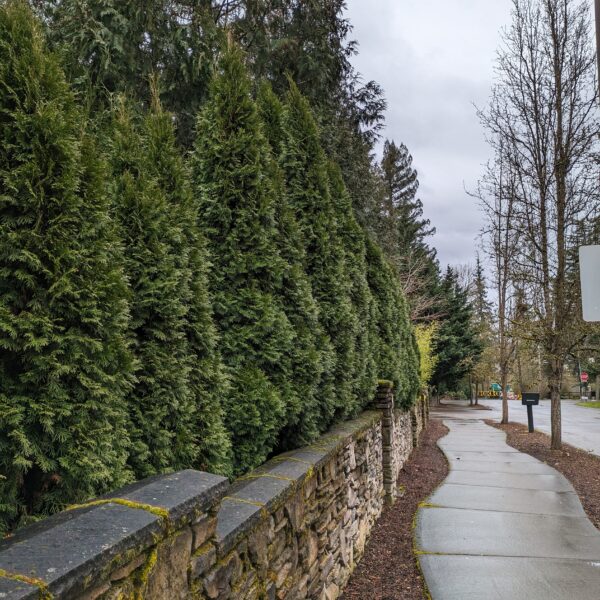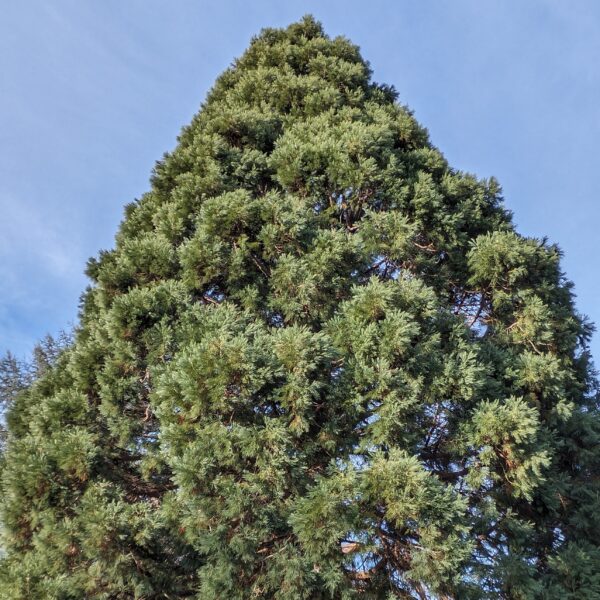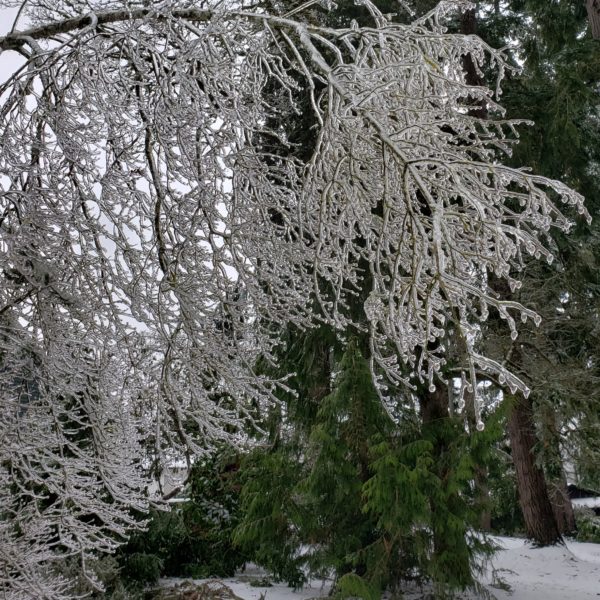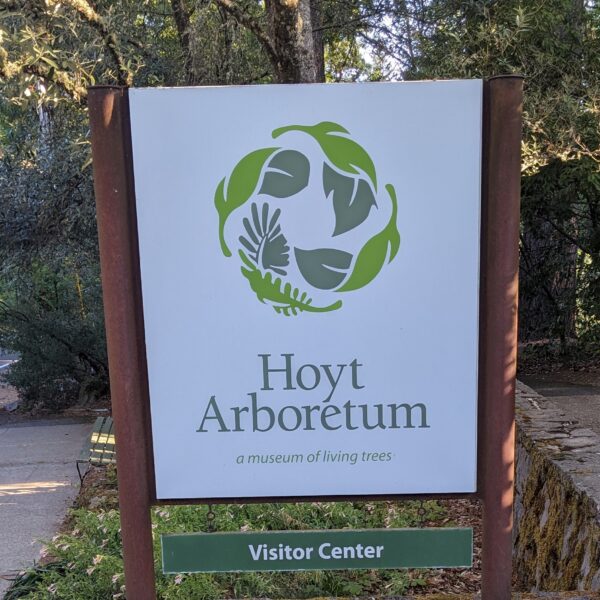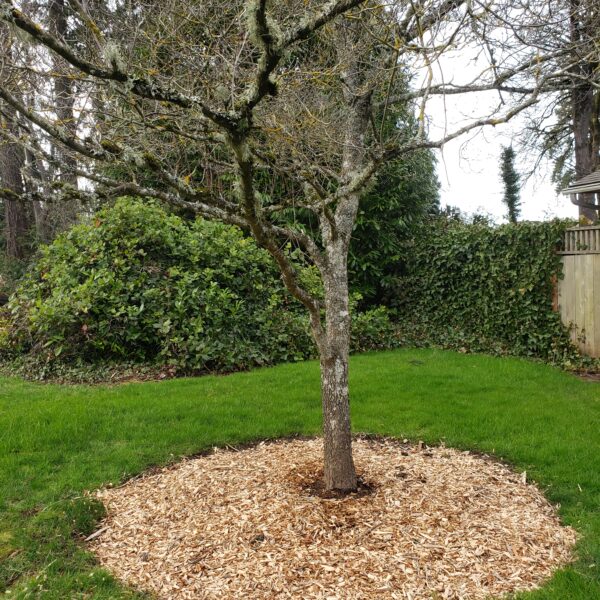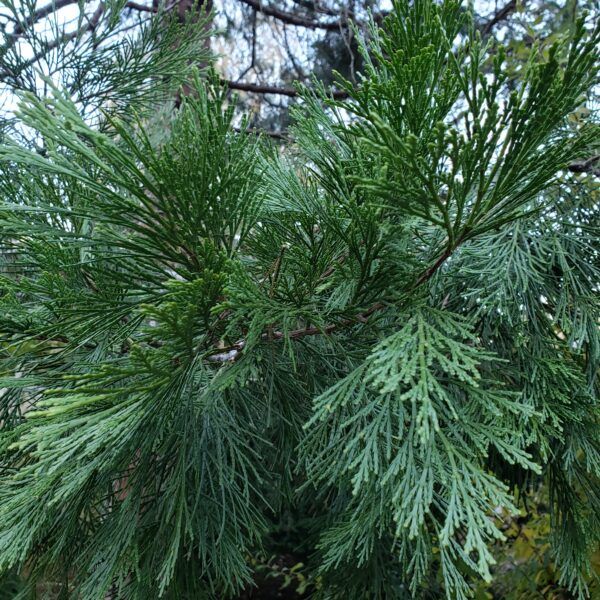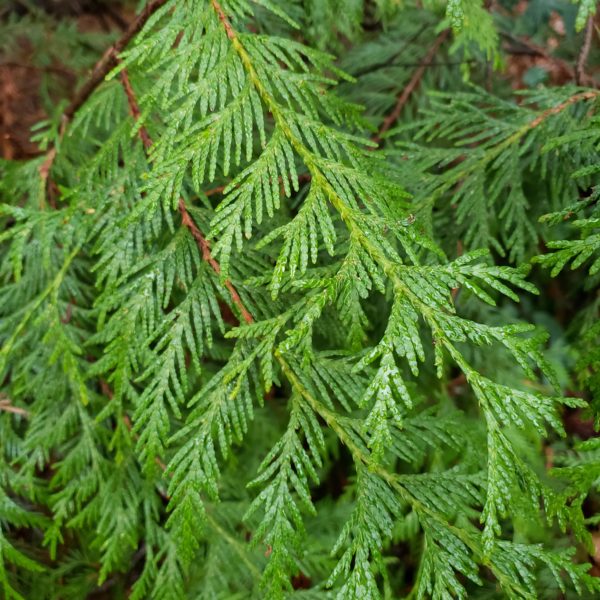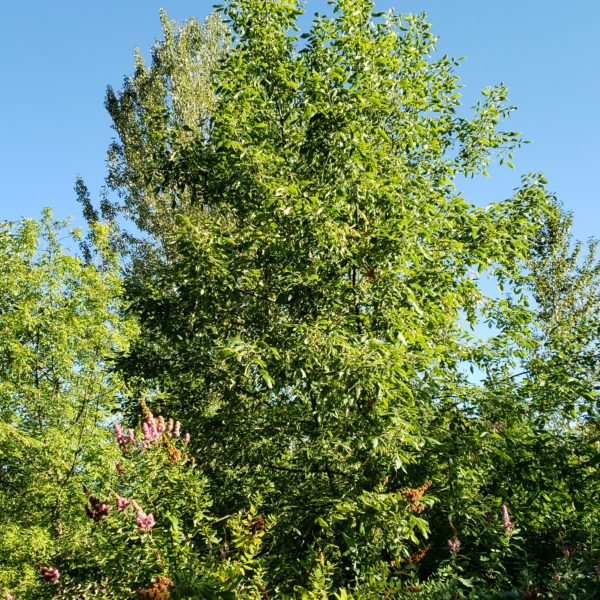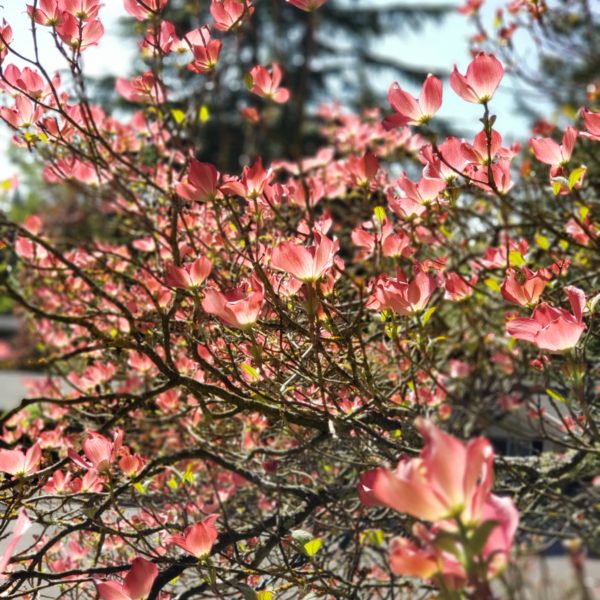Many of the tree health issues and failures we see are the direct result of improper protection during construction. If you plan to preserve a tree growing within the construction zone during a new build, remodel, addition, or pavement installation, the trees must be protected. During the project, temporary construction fencing, as seen above, is placed around the root protection... Read More
In an urban center, the sounds of traffic, construction, and industry can be heard at all times. 65% of Oregon’s population live in urban centers and are subject to these increased noise levels. The hard, flat surfaces of a built urban environment reflect, rather than absorb, sound waves, creating a cacophony of manmade noise that is stress inducing and potentially... Read More
The giant sequoia (Sequoiadendron giganteum) is the most massive tree on earth. This majestic evergreen tree is native to the western slopes of the Sierra Nevada, but also grows in the Portland area. The giant sequoia is also known for its longevity. Some giant sequoias alive today were already 1800 years old when Columbus reached America! Giant Sequoia Growth Habit... Read More
The January 2024 winter storm brought sleet, snow, freezing rain, and wind to the Portland area, taking a heavy toll on our urban forest. We have seen widespread tree damage across the Portland area ranging in severity from whole trees uprooting and toppling over to major branch breakages. Our arborists are working hard to help with your tree emergencies and... Read More
Nestled in the west hills overlooking Portland grows a living museum of the world’s trees. The Hoyt Arboretum has inspired and awed visitors for generations with its carefully curated and maintained trees from all over the world. Miles of meandering paths wind through 190 acres and bring visitors up close to familiar and unfamiliar species of trees. Hoyt Arboretum Tree... Read More
Our arborists recommend mulching your trees because it is one of the simplest and most beneficial ways of caring for your trees. Mulching is simply adding a layer of protective material at the base of your trees. Benefits of Mulching Mulching protects your trees by reducing water loss through evaporation, preventing soil erosion, controlling weeds that compete for nutrients and... Read More
Incense cedar (Calocedrus decurrens) can be found growing in a wide variety of natural habitats, from wet streamside riparian habitats to dry mountainside habitats. Its native range encompasses mixed conifer forests on the east side of Mt. hood, south through Oregon and down to California. Due to its tolerance for a wide variety of growing conditions, incense cedar can also... Read More
Western red cedars are one of our favorite native trees of Oregon and they seem to be in trouble. Western red cedars have been showing signs of stress in pockets throughout the Willamette Valley and across the Pacific Northwest in recent years. The alarming decline of these important trees is being investigated by officials. Although the cause has not been... Read More
The emerald ash borer (EAB) is an invasive insect that has decimated ash species across the United States and is considered the most destructive forest pest in America. It has now been spotted in Oregon. The first confirmed sighting in June 2022 in Forest Grove, Oregon, has raised the alarm throughout the state. All ash species are vulnerable to the... Read More
Dogwood trees begin to bloom in April in the Portland area. Many bloom before they leaf out, spotlighting the showy ‘petals’. Dogwoods (Cornus spp.) are a favorite deciduous garden plant in the Portland area, as seen in the multitude of dogwood species and varieties grown here. The variety of dogwoods boast a wide range of color, bract shape, branching habit,... Read More




